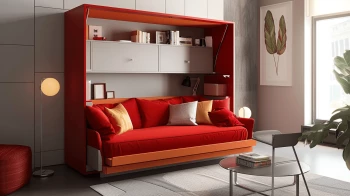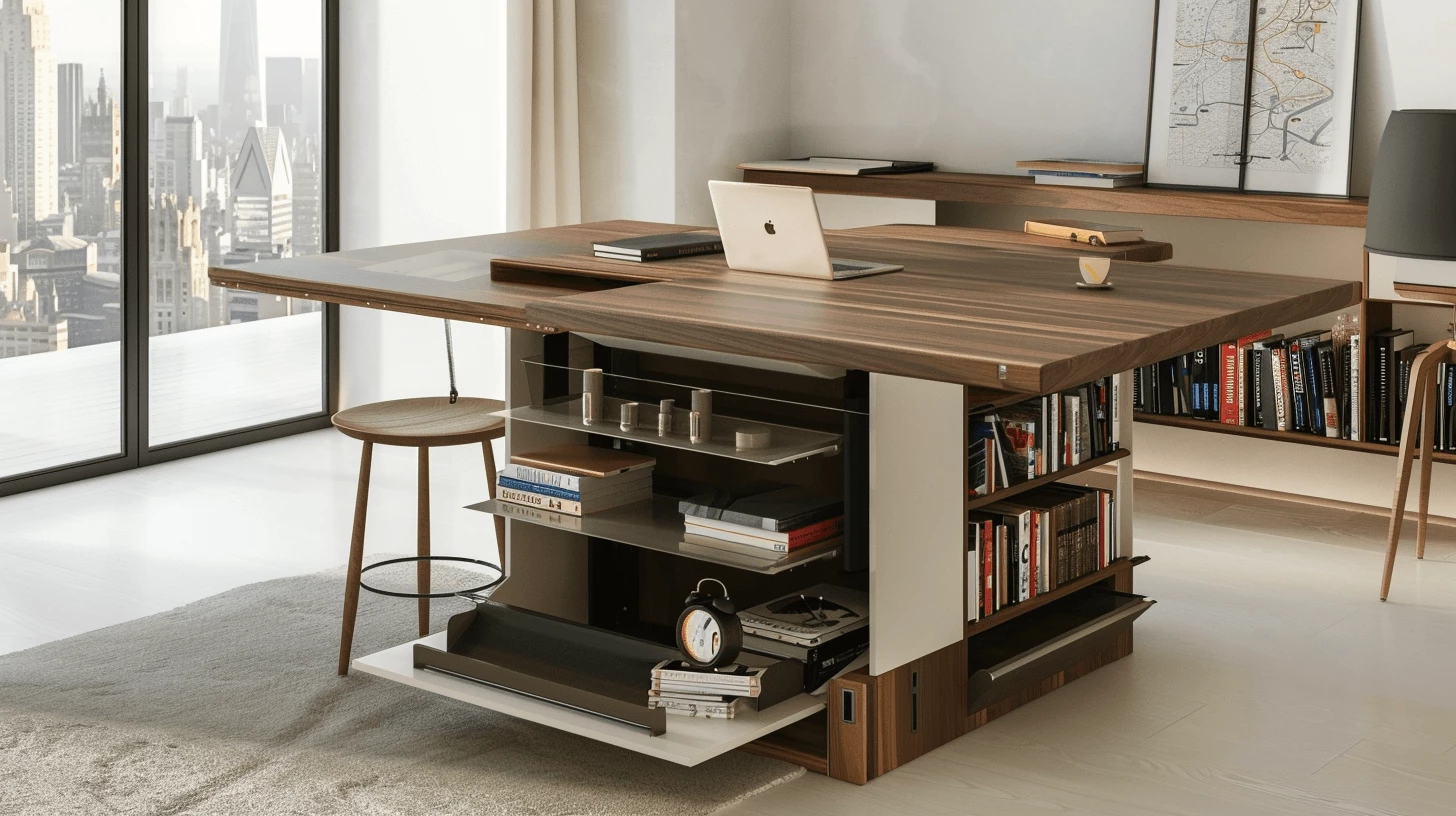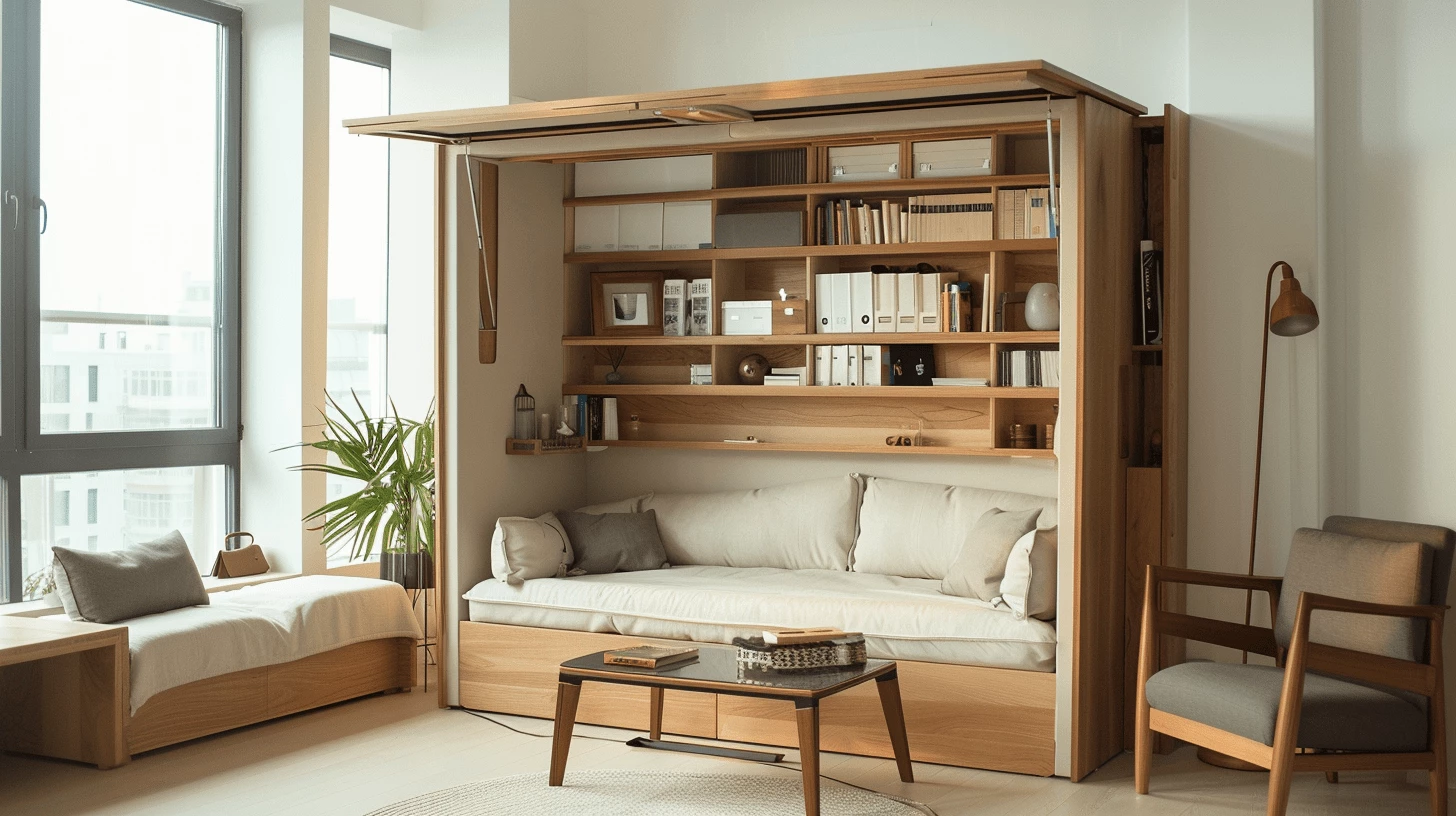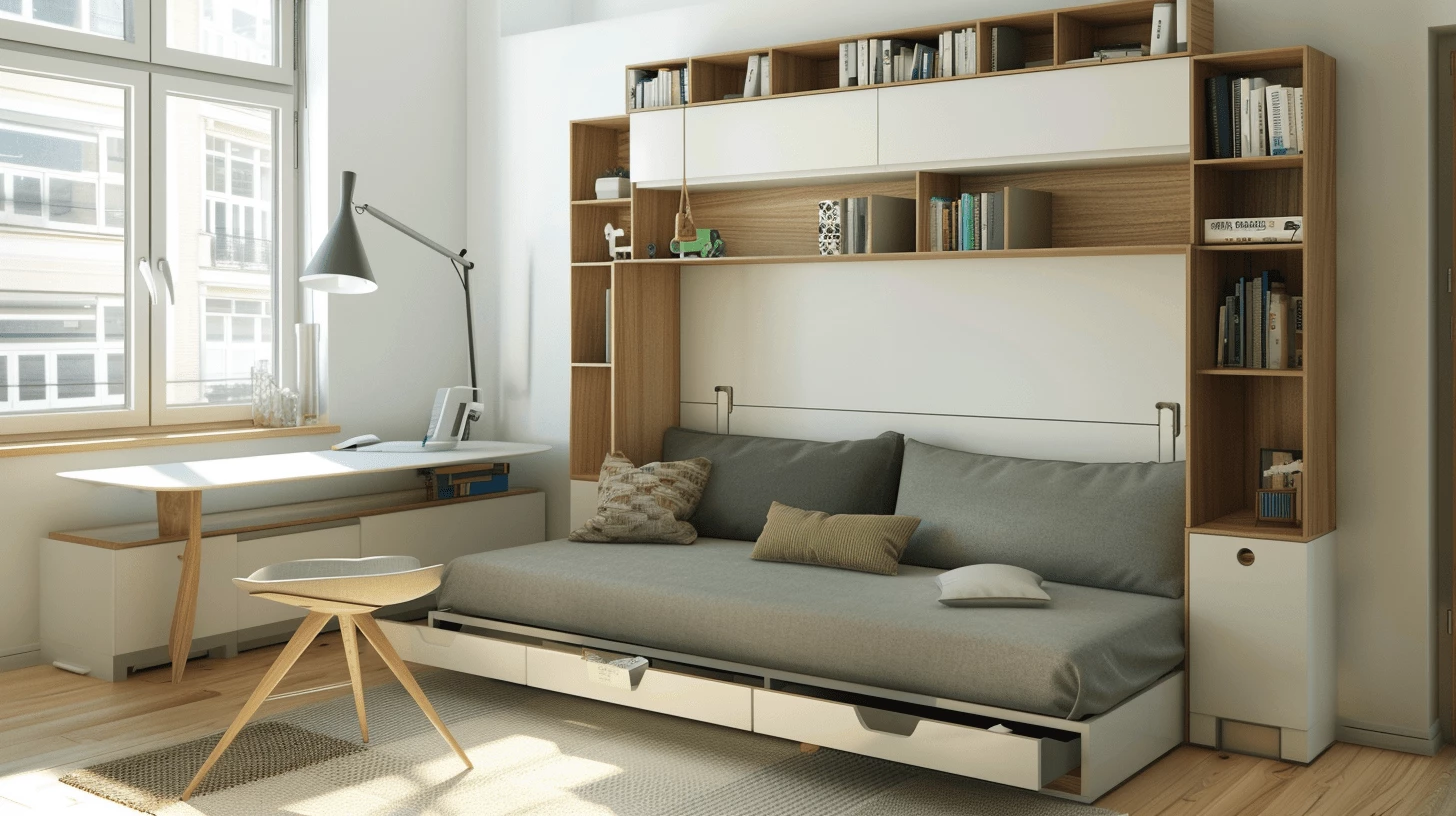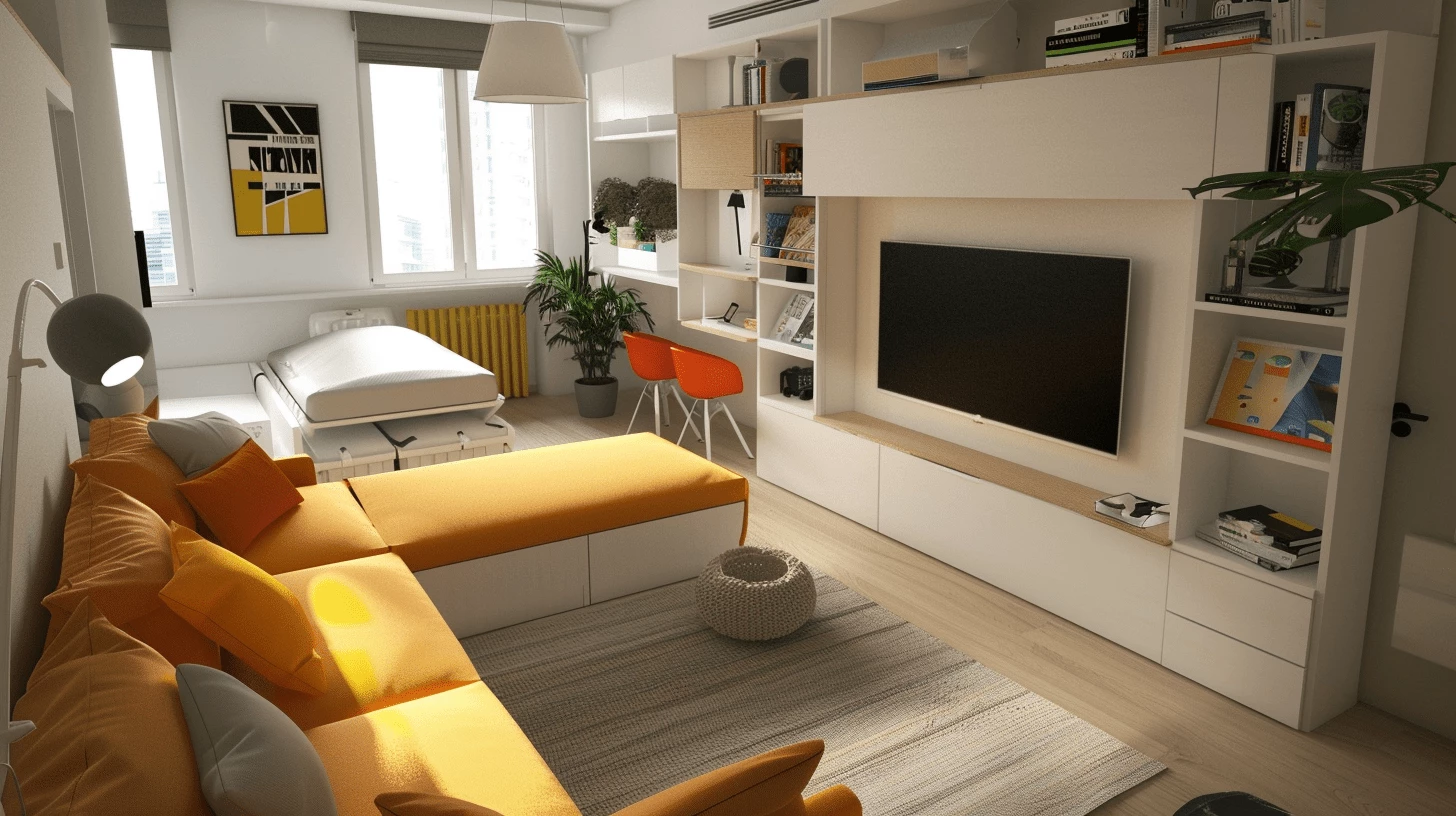Introduction to Multifunctional Furniture
In today’s fast-paced world, the efficiency of space utilization in homes and offices has never been more crucial. Multifunctional furniture, also known as multi-purpose or convertible furniture, is designed to meet this need by combining form with function, providing multiple uses within a single piece of furniture. This trend not only saves space but also contributes to a minimalist and clutter-free living environment.
Understanding the Appeal of Multifunctional Furniture
- Space-Saving Solutions: Ideal for small apartments, studios, and offices where space is at a premium.
- Cost-Effective: Reduces the need to purchase multiple pieces of furniture.
- Aesthetic and Functional Design: Combines modern design aesthetics with versatile functionality.
Types of Multifunctional Furniture
Sofa Beds
- Convert from a sofa to a bed, providing sleeping space without occupying the permanent footprint of a bed.
Extendable Tables
- Serve as compact surfaces that can expand for dining or workspace needs.
Storage Ottomans
- Offer seating options while also functioning as storage space.
Convertible Desks
- Transform from compact desks to larger workspaces or fold away when not in use.
Benefits of Multifunctional Furniture in Modern Living
- Adaptability: Easily adapts to different needs throughout the day, from work to relaxation.
- Efficiency: Optimizes living spaces, allowing for easier mobility and better organization.
- Aesthetic Appeal: Sleek, modern designs that fit well with contemporary decor themes.
Design Innovations in Multifunctional Furniture
- Technology Integration: Features like built-in charging stations, speakers, and connectivity options.
- Eco-friendly Materials: Use of sustainable materials like bamboo and recycled metals.
Choosing the Right Multifunctional Furniture for Your Space
- Assessing Needs and Space: Determine what functions are needed and the amount of available space.
- Quality and Durability: Look for furniture that offers durability and easy maintenance.
- Design Compatibility: Choose pieces that complement the existing decor and color schemes.
Multifunctional Furniture for Small Spaces
- Creative Solutions for Tiny Apartments: Ideas for using multifunctional furniture to maximize utility in limited spaces.
- Vertical Designs: Furniture that makes use of vertical space, such as loft beds with desks or storage underneath.
Multifunctional Furniture in Office Environments
- Enhancing Productivity: Furniture that can be reconfigured for various tasks and team sizes.
- Hybrid Working Models: Pieces that accommodate both in-office and remote work needs.
Trends in Multifunctional Furniture Design
- Modularity: Furniture that can be reconfigured or adjusted to suit changing needs and spaces.
- Customization: Options that allow customers to customize pieces according to their specific requirements.
FAQs
- What should I consider when buying multifunctional furniture? When purchasing multifunctional furniture, consider the size of your space to ensure the furniture fits well without overcrowding. Look for high-quality materials and construction to ensure durability. Consider the functionality and how the piece can serve multiple purposes without compromising on comfort or aesthetics. Also, think about the ease of transformation and storage options the furniture offers.
- How can multifunctional furniture improve living spaces? Multifunctional furniture can greatly enhance living spaces by optimizing the available area, reducing clutter, and providing versatile usage options. It allows for better organization and adaptability to different activities, such as working from home, dining, or sleeping. This kind of furniture is particularly beneficial in small apartments where maximizing space is crucial.
- What are some popular multifunctional furniture pieces for small apartments? Popular pieces for small apartments include sofa beds, which can serve as seating and a guest bed; ottomans with storage, which can be used as seating, storage, and even a coffee table; and extendable dining tables that can adjust in size according to need. Wall beds that fold up against the wall and modular furniture that can be reconfigured as needed are also excellent choices.
- How does multifunctional furniture contribute to sustainability? Multifunctional furniture contributes to sustainability by reducing the need for multiple pieces of furniture, thereby decreasing material use and waste. It often encourages a minimalist lifestyle and longer product lifecycles, as one piece is used for various functions. Additionally, by optimizing space and materials, these furniture pieces can reduce the carbon footprint associated with manufacturing and shipping multiple items.
- What maintenance is required for multifunctional furniture? Maintenance for multifunctional furniture typically involves regular cleaning and checking mechanisms for smooth operation, especially for pieces that convert (like sofa beds or extendable tables). Follow the manufacturer’s instructions for care and cleaning products suitable for the materials. Periodic tightening of screws and hardware may also be necessary to keep the furniture stable and functional.
- What future trends are expected in the design of multifunctional furniture? Future trends in multifunctional furniture design are expected to focus on smart furniture integrated with technology for enhanced usability and customization. Sustainability will likely drive innovations in eco-friendly materials and production processes. Additionally, designs that cater to increasingly flexible home and work environments, with furniture that can seamlessly transition between different uses and styles, are anticipated to become more prevalent.
Conclusion
Multifunctional furniture is more than just a practical solution for space management; it’s a lifestyle choice that reflects the modern desire for minimalism, efficiency, and flexibility in our living and working environments. Whether it’s for a home or an office, multifunctional pieces are proving to be invaluable in making the most of our spaces.
